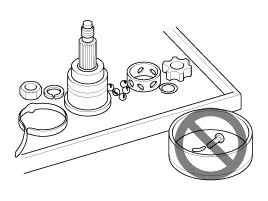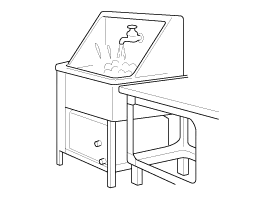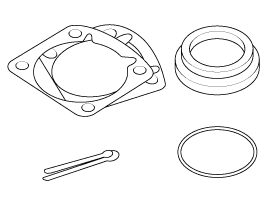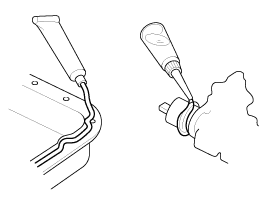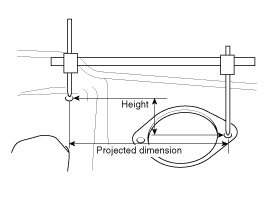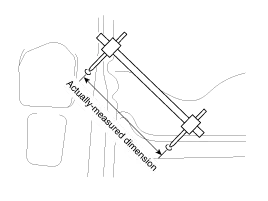Hyundai Genesis (DH): General Information / General Service Information
General Information
| General Service Information |
The support rod must be inserted into the hole near the edge
of the hood whenever you inspect the engine compartment to prevent the
hood from falling and causing possible injury.
Make sure that the support rod has been released prior to
closing the hood. Always make sure the hood is firmly latched before
driving the vehicle. |
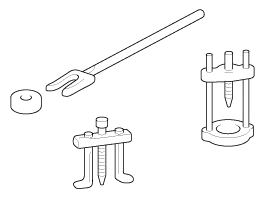

| 1. |
Inspection of parts
Each part, when removed, should be carefully inspected for malfunction, deformation, damage, and other problems.
|
| 2. |
Arrangement of parts
All disassembled parts should be carefully arranged for effective reassembly.
Be sure to separate and distinguish the parts to be replaced from those that will be used again.
|
| 3. |
Cleaning parts for reuse
All parts to be used again should be carefully and thoroughly cleaned in an appropriate method.
|
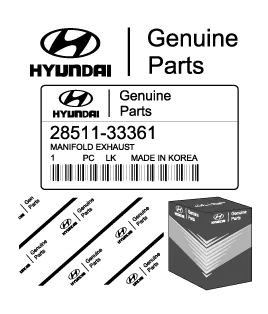
| 1. |
Oil seals |
| 2. |
Gaskets |
| 3. |
O-rings |
| 4. |
Lock washers |
| 5. |
Cotter pins (split pins) |
| 6. |
Plastic nuts
Depending on their location. |
| 7. |
Sealant should be applied to gaskets. |
| 8. |
Oil should be applied to the moving components of parts. |
| 9. |
Specified oil or grease should be applied to the prescribed locations (oil seals, etc.) before assembly.
|
| 1. |
Be sure to disconnect the battery cable from the negative (-) terminal of the battery. |
| 2. |
Never pull on the wires when disconnecting connectors. |
| 3. |
Locking connectors will click when the connector is secure. |
| 4. |
Handle sensors and relays carefully. Be careful not to drop them against other parts.
|

| 1. |
Basically, all measurements in this manual are taken with a tracking gauge. |
| 2. |
When a measuring tape is used, check to be sure there is no elongation, twisting or bending. |
| 3. |
For measuring dimensions, both projected dimensions and actual - measurement dimensions are used in this manual. |
| 1. |
The dimensions are measured by projecting the measurement points on the vehicle surface onto the reference dimensions. |
| 2. |
If the length of the tracking gauge proves is adjustable,
measure the dimensions by lengthening one of the two probes to the
height difference between the two measuring surfaces.
|
| 1. |
These dimensions indicate the actual linear distance between
measurement points, and are used as the reference dimensions when a
tracking gauge is used for measurement. |
| 2. |
First adjust both probes to the same length (A=A') before measurement.
|

| 1. |
Check the terminal for tightness. |
| 2. |
Check terminals and wires for corrosion from battery electrolyte, etc. |
| 3. |
Check terminals and wires for open circuits. |
| 4. |
Check wire insulation and coating for damage, cracks and degrading. |
| 5. |
Check whether the conductive parts of terminals contact other metallic parts (vehicle body and other parts). |
| 6. |
Check whether there is complete continuity between the attaching bolt(s) of the grounded parts and the vehicle |
General Information Basic Service Symbols There are five primary symbols used to complement illustrations. These symbols indicated the materials to be applied to parts during service.
Other information:
Hyundai Genesis (DH) 2013-2016 Service Manual: Blind Spot Detection Switch Repair procedures
Removal 1. Disconnect the negative (-) battery terminal. 2. Remove the crash pad lower panel. (Refer to Body - "Crash Pad") 3. Remove the blind spot detection (BSD) switch (A) after disengaging the mounting clip. Installation 1. Install the crash pad side switch assembly after connecting the connector.
Hyundai Genesis (DH) 2013-2016 Service Manual: Cluster Ionizer Repair procedures
Inspection 1. Press the MODE switch more than 4 times within 2 seconds while pressing the OFF switch. DisplayFail description00Normal51Cluster ion generator fault * For diagnostic procedure, refer to DTC guide. Replacement 1. Disconnect the negative (-) battery terminal.
Categories
- Manuals Home
- Kia Cadenza Owners Manual
- Kia Cadenza Service Manual
- Engine And Transaxle Assembly
- Glove Box Components and Components Location
- Engine Control System
- New on site
- Most important about car



